Nolen’s stories reveal how the disease works, how it spreads, and how it kills; how it is inextricably tied to conflict, famine, failure of leadership, and the collapse of states, and to the cultures it has ravaged; how treatment works, and how people who can’t get it fight to stay alive with courage, dignity, and hope against huge odds. Writing with power, understanding, and simplicity, Stephanie Nolen makes us listen, allows us to understand, and inspires us to care. Timely, transformative, and thoroughly accessible, 28 is essential reading for our times.
28: Stories of AIDS in Africa
KShs 1,800.00
Nolen’s stories reveal how the disease works, how it spreads, and how it kills; how it is inextricably tied to conflict, famine, failure of leadership, and the collapse of states, and to the cultures it has ravaged; how treatment works, and how people who can’t get it fight to stay alive with courage, dignity, and hope against huge odds. Writing with power, understanding, and simplicity, Stephanie Nolen makes us listen, allows us to understand, and inspires us to care. Timely, transformative, and thoroughly accessible, 28 is essential reading for our times.
1 in stock
Related products
-
Robbins & Cotran Pathologic Basis of Disease
KShs 18,480.00Readable and highly illustrated, Robbins and Cotran Pathologic Basis of Disease, 10th Edition presents an in-depth, state-of-the-art overview of human diseases and their cellular and molecular basis. This best-selling text delivers the latest, most essential pathology knowledge in a readable, interesting manner, ensuring optimal understanding of the latest basic science and clinical content. More than 1,000 high-quality photographs and full-color illustrations highlight new information in molecular biology, disease classifications, new drugs and drug therapies, and much more. This superb learning package also includes an enhanced eBook with a full complement of ancillary content on Student Consult.
-
Nelson Textbook of Pediatrics_vol 1
KShs 12,000.00The worlds most trusted pediatrics resource continues to provide the most authoritative coverage of the best approaches to care in this streamlined new edition. With two new editors, extensive updates, and expanded online features, youll have the well-rounded, up-to-date guidance you need to offer your patients the very best. ? Stay current on recent developments and hot topics such as melamine poisoning, long-term mechanical ventilation in the acutely ill child, sexual identity and adolescent homosexuality, age-specific behavior disturbances, and psychosis associated with epilepsy. ? Tap into substantially enhanced content with world-leading clinical and research expertise from two new editors Joseph W. St. Geme III, MD, and Nina F. Schor, MD, PhD who contribute on key subspecialties, including pediatric infectious disease and pediatric neurology. ? Manage the transition to adult healthcare for children with chronic diseases through discussions of the overall health needs of patients with congenital heart defects, diabetes, and cystic fibrosis. ? Recognize, diagnose, and manage genetic conditions more effectively using an expanded section that covers these diseases, disorders, and syndromes extensively.
-
Study Guide for Understanding Pathophysiology
KShs 8,190.00Reinforce your understanding of difficult pathophysiology concepts! Corresponding to the chapters from Huether’s Understanding Pathophysiology, 7th Edition, this study guide provides a wide variety of activities and thousands of interactive questions to help you review and master pathophysiology content. This practical workbook guides readers through chapters on normal anatomy and physiology to chapters on body systems and disease. Case scenarios and practice exams help you develop the clinical thinking skills needed to succeed in clinical practice.
New to this edition- NEW! UPDATED content reflects the updates to the main text along with changes to the chapter structure.
Key Features- More than 30 case scenarios provide real-world examples of how pathophysiology is used in the clinical setting.
- More than 2,500 interactive, engaging activities and questions are provided in a variety of formats.
- Nearly 70 images from the textbook are used in Explain the Pictures and Draw Your Answers questions to better engage visual learners.
- Teach These People about Pathophysiology poses questions directly from the patient’s point of view.
- Corresponding chapters make it easy to go back and forth between the workbook and the Understanding Pathophysiology textbook.
- Answer key allows you to check answers and evaluate your progress.
Author InformationBy Sue E. Huether, MS, PhD, Professor Emerita, College of Nursing, University of Utah, Salt Lake City, Utah and Kathryn L. McCance, MS, PhD, Professor Emerita, College of Nursing, University of Utah, Salt Lake City, Utah -
Nursing Foundation: Concepts and Perspectives
KShs 6,580.00The book under title ‘Nursing Foundation: Concepts and Perspectives’ has been written in lucid style, simple language and with goal-oriented outlook. It will help the students of undergraduate nursing programme at the post basic level which is a broad based education within an academic framework, to develop understanding of philosophy, objectives, responsibilities of nursing profession; to build upon the skills and competence acquired at the diploma level. It will orient them to the current concepts involved in practice of nursing and developments in nursing profession; direct to upgrade their critical thinking skills, competencies and standards required for practice of professional nursing and to follow nursing process. This book provides up-to-date information in accordance with the latest syllabus prescribed to them and they will be able to identify professional, ethical, and legal aspects of nursing profession, current trends in health and nursing and steps of nursing process. Each chapter deals with a specific aspect of foundation of nursing with complete clarity of expression, simplicity to exposition, intensive text and adequate illustrative material in the form of diagrams, flow charts and tables followed by key points, chapter end questions comprising of essay type questions, short answer questions and multiple choice questions at the end of each chapter. The chapters have been sequenced to facilitate ease and continuity in reading and understanding, and at the end of each chapter, related references have been given as suggested reading.
-
An Introduction to Forensic Genetics, 2nd Edition
KShs 16,198.00This is a completely revised edition of a comprehensive and popular introduction to the fast moving area of Forensic Genetics. The text begins with key concepts needed to fully appreciate the subject and moves on to examine the latest developments in the field. Now illustrated in full colour throughout, this accessible textbook includes numerous references to relevant casework. With information on the full process of DNA evidence from collection at the scene of a crime to presentation in a legal context this book provides a complete overview of the field.
Key Features:
- Greater in-depth coverage of kinship problems now covered in two separate chapters: one dealing with relationships between living individuals and the other covering identification of human remains.
- New chapter on non-human forensic genetics, including identification of bacteria and viruses, animals and plants.
-
Workbook and Lab Manual for Sonography, 5th Edition
KShs 15,832.00Workbook for Sonography: Introduction to Normal Structure and Function, 5th Edition. This well-constructed review tool supports and completes the main text by providing an excellent introduction to sonography while preparing users to accurately identify sonographic pathology and abnormalities. Each workbook chapter opens with review questions on material from the corresponding chapter in the main text. Review questions are followed by drawings from the text — with parallel sonograms where appropriate — that include leader lines to label structures, but not the labels themselves. Workbook users will fill in the labels to identify structures in the drawings and sonograms, reinforcing visual and auditory learning from the text. Answers can be looked up in both the workbook appendix and by comparing the workbook figures to the labeled figures in the main text.
-
Handbook of Health Research Methods: Investigation, Measurement and Analysis 1st Edition
KShs 7,278.00This handbook helps researchers to plan, carry out, and analyse health research, and evaluate the quality of research studies. The book takes a multidisciplinary approach to enable researchers from different disciplines to work side-by-side in the investigation of population health, the evaluation of health care, and in health care delivery.
Handbook of Health Research Methods is an essential tool for researchers and postgraduate students taking masters courses, or undertaking doctoral programmes, in health services evaluation, health sciences, health management, public health, nursing, sociology, socio-biology, medicine and epidemiology. However, the book also appeals to health professionals who wish to broaden their knowledge of research methods in order to make effective policy and practice decisions.
Contributors: Joy Adamson, Geraldine Barrett, Jane P. Biddulph, Ann Bowling, Sara Brookes, Jackie Brown, Simon Carter, Michel P. Coleman, Paul Cullinan, George Davey Smith, Paul Dieppe, Jenny Donovan, Craig Duncan, Shah Ebrahim, Vikki Entwistle, Clare Harries, Lesley Henderson, Kelvyn Jones, Olga Kostopoulou, Sarah J. Lewis, Richard Martin, Martin McKee, Graham Moon, Ellen Nolte, Alan O’Rourke, Ann Oakley, Tim Peters, Tina Ramkalawan, Caroline Sanders, Mary Shaw, Andrew Steptoe, Jonathan Sterne, Anne Stiggelbout, S.V. Subramanian, Kate Tilling, Liz Twigg, Suzanne Wait.
-
Mims’ Medical Microbiology and Immunology, International Edition, 7th Edition
KShs 5,642.00MIMS’ Medical Microbiology and Immunology is loved internationally for its thorough yet easy-to-follow coverage of microbiology, infectious diseases, and immunology as a dynamic interplay between microbes and host. Covering the fundamentals of these closely linked disciplines, MIMS’ takes a systems approach to elaborate on epidemiology, clinical presentation, pathogenesis, and diagnostic approaches, as well as treatment and infection control considerations, supplemented by case-based examples. Complex scientific and clinical concepts are explained clearly and simply with the help of illustrations and a range of accompanying online content. Students will come away with a deep understanding of topics and processes, and will return to this book for reference time and again.Key Features- Clear writing and easy-to-understand explanations – perfect for students learning to grasp the fundamentals of both microbiology and immunology
- User-friendly format with colour coding, key concept boxes, and dynamic illustrations for easy navigation
- Organised by body system – goes beyond the ‘bug parade’ to help you understand clinical context
Author InformationBy Richard Goering, BA MSc PhD, Professor and Chair, Department of Medical Microbiology and Immunology, Creighton University School of Medicine, Omaha, Nebraska.; Hazel M. Dockrell, BA (Mod) PhD, Professor of Immunology, Faculty of Infectious and Tropical Diseases, London School of Hygiene and Tropical Medicine, London, UK; Mark Zuckerman, BSc(Hons), MBBS, MRCP, MSc, FRCPath, Consultant Virologist and Honorary Senior Lecturer, South London Specialist Virology Centre, King’s College Hospital NHS Foundation Trust, King’s College London School of Medicine, London, UK; Peter L. Chiodini, BSc, MBBS, PhD, FRCP, FRCPath, FFTM, RCPS(Glas), Consultant Parasitologist, Hospital for Tropical Diseases, London and Honorary Professor, London School of Hygiene and Tropical Medicine, London, UK


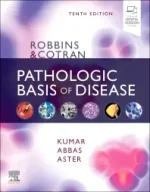
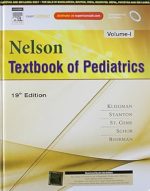
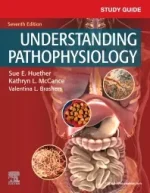
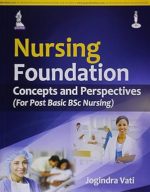

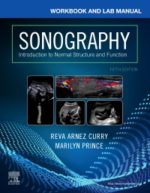
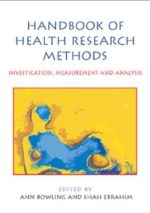
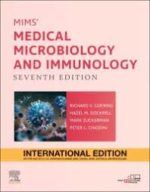
Be the first to review “28: Stories of AIDS in Africa”